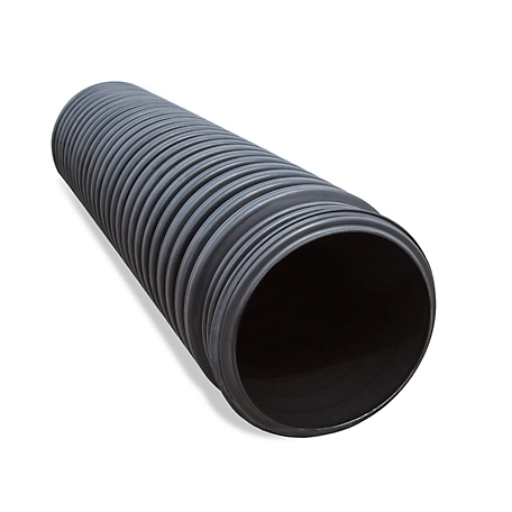Regarding drainage solutions, choosing the right materials is important for efficiency and sustainability in the face of the environment. These days, double-wall corrugated pipes made from high-density polyethylene (HDPE) have proven themselves as one of the best options for a range of drain applications due to their superior structural strength and hydrodynamics. In this article, we shall discuss some technical features that make these types of HDPE pipes suitable for use in drainage systems, including their chemical corrosion resistance, good flow capacity, and lightweight nature. This knowledge will help you understand why modern drainages are incomplete without them because they enhance performance reliability in different settings.
What is an HDPE double-wall corrugated Pipe?
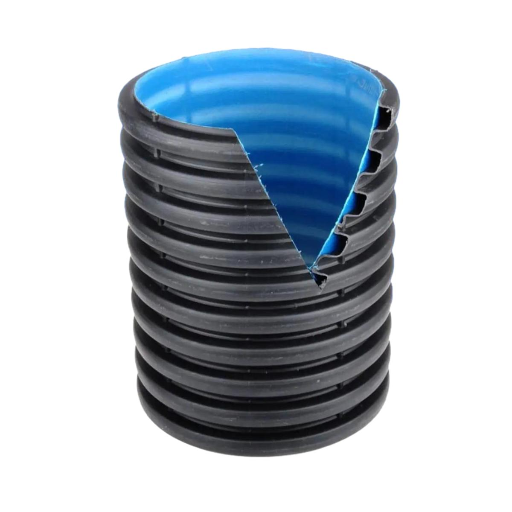
Understanding HDPE – What Is It And Why Should We Care About Its Advantages?
High-density polyethylene (HDPE) is a thermoplastic polymer with an excellent strength-to-density ratio useful for many drainage purposes. The molecular arrangement within HDPE gives it extra toughness so that it can handle stress without deforming when loaded, hence perfecting its use in underground installations. The primary advantage offered by this material lies in its ability to resist chemicals that corrode other materials used under aggressive soil conditions or near chemically active liquids commonly found around drains. Moreover, the flexibility exhibited by this staff helps deal with situations involving motion caused by shifting grounds while maintaining integrity throughout such movements. Another thing is that HDPE does not easily get affected by ultraviolet light; therefore, it can last long even when exposed to direct sunlight over prolonged periods. Apart from being light-weighted which eases transportation during delivery process also makes worksite handling easier, thus reducing costs related with hiring laborers or buying heavy machinery required for moving heavier items like those made from metals would be needed otherwise too expensive thus increasing affordability levels among individuals having limited financial resources but desiring improved living standards through better services provision especially relating to hygiene matters- all these attributes make HDPE ideal choice whenever effective sustainable drains need to be put in place.
Characteristics of Double Wall Corrugated Pipes
The design of double wall corrugated (DWC) pipes is unique as it has many benefits in the field of drainage and sewage. One such advantage is that the outer walls are corrugated, which provides them with higher load-bearing capacity, thus making them more resistant to deformation and stress, especially when used in heavy-duty applications. Secondly, internally they are smooth-walled that enhancing flow dynamics by reducing resistance hence lowering the chances of blockage occurring.
Another aspect I noticed about these pipes is their strength; they can endure harsh environments like chemically aggressive atmospheres or extreme temperatures without failing to work well. Furthermore, being lightweight makes handling easier during installation, simplifying operations even further. In summary, this combination of characteristics makes double-wall corrugates a good choice for efficient and reliable drainage systems across various uses.
Why Choose Corrugated Pipes for Drainage?
When we talk about selecting drainage solutions, it becomes evident that using corrugated pipe, among other alternatives, would be preferable due to its performance records backed by scientific facts and structural merits inherent in it. Among these advantages is increased hydraulic efficiency associated with its design.
To be precise, studies have shown that compared to traditional pipe materials like PVC, etc., flow resistance can be decreased by 30% through adopting this kind of technology because the inner surface area is smooth, thus allowing water to move faster along it, thereby improving general drainage effectiveness. What’s more, I like their ability to flex considerably without collapsing under heavy loads; tests show that no buckling was observed under over 12000 pounds per square foot pressure exerted on the top part.
Additionally, there is also a longevity factor attached onto such type since it has been found out through research conducted within controlled environment settings where average lifespan exceeded half century mark for typical sewer application, whiles concrete ones may fail after just twenty-five years due to cracking, etc., this means if you use recycled content during manufacturing process not only will you contribute towards environment conservation but also save money since they are cheaper to install by about 20% because transportation is less costly and easy handling reduces labour charges too. These points strengthen my belief in selecting corrugated pipe as the reliable solution for different drainage needs.
What Are the Specifications of HDPE Double Wall Corrugated Pipes?
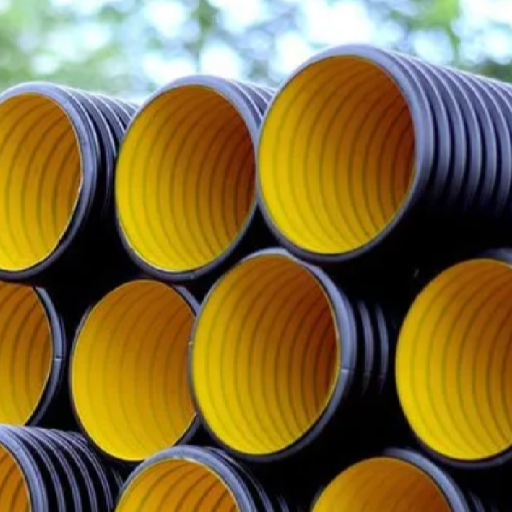
Sizes and Size
About HDPE double wall corrugated pipe specifications, it should be noted that they normally come in sizes between four inches (4″) and forty-eight inches (48″) diameters. Such diameters can accommodate different drainage systems as well as sewer lines. What is peculiar with these types of pipes is that the outside diameter is bigger than those of conventional PVC pipes, making them more rigid. Some industry leading producers have shown through their data that they use standard dimensional ratios ranging from thirty-two point five (32.5) to thirteen point five (13.5). This allows flexibility during design while maintaining optimum hydraulic performance.
Also, I found out that thickness varies directly proportional to diameter because big-sized ones would need more walls for support when under load-bearing conditions. My understanding of this systematic approach to designing around sizes and dimensions has been further enhanced by my observation of how such considerations greatly contribute to ensuring reliability across various environments.
Material Requirements
When it comes to HDPE double wall corrugated pipe, the material used greatly determines its performance capabilities, as well as its lifespan features. The most commonly employed component for manufacturing these products is high-density polyethylene (HDPE) which possesses excellent resistance against chemical corrosion, UV rays as well as impacts. According to industry standards and specifications, sheets’ densities range between 0.941g/cm³-0.965g/cm³, meaning they are light yet strong enough structurally speaking too. Moreover, an inner smooth layer is coupled with an outer ribbed structure, thus taking full advantage of HDPE’s strength while minimizing energy loss due to friction during fluid flow within them.
Other intrinsic qualities possessed by materials like HDPE are inbuilt flexibility and ductility, enabling them to withstand ground movements and temperature variations without compromising their integrity. Still, my findings about what constitutes this particular type of construction material have consistently highlighted its benefits in several areas, ranging from small-scale domestic drainage systems to large municipal projects.
ASTM and AASHTO
My review of HDPE double wall corrugated pipes has brought to my attention the importance of complying with ASTM (American Society for Testing and Materials) as well as AASHTO (American Association State Highway Transportation Officials) guidelines if quality performance is to be achieved. ASTM F894 provides specifications concerning dual-walled or corrugated HDPE pipe & fittings, including material composition requirements and dimensional tolerances allowed among other physical properties while on the other hand; AASHTOM330 stipulates minimum standards necessary for any drainage or sewerage system made out of plastics such that they should undergo thorough evaluations so that aspects like load bearing capacities can be accurately determined in relation with hydraulic performances expected from them
Consequently, it is through adherence to these regulations that manufacturers can assure consumers about the durability of their products, hence gaining credibility within the industry. This also serves as a sure way of proving suitability for use in residential and commercial infrastructure development projects alike.
How do you install HDPE double-wall corrugated pipes?
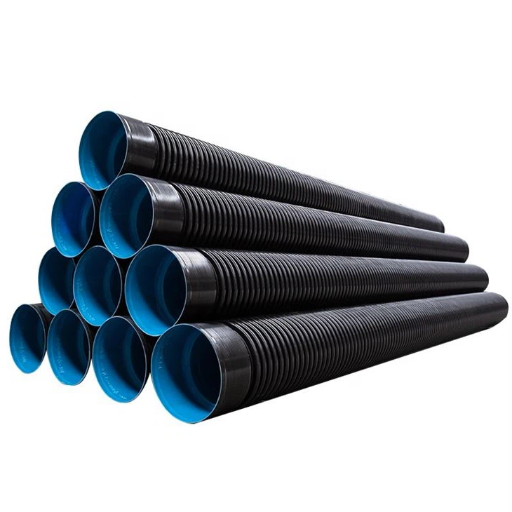
Preparation and Site Planning
Before setting up HDPE double-wall corrugated pipes, I perform an extensive site evaluation that takes into account land forms, soil types, as well as pre-existing drainage works. This initial study helps me to identify potential challenges like high levels of groundwater or stony subsoil, which may affect the installation methods used. Based on hydraulic calculations, I plan the alignments and depths of these tubes such that they have desirable slopes for optimal flow efficiency. In addition, any relevant environmental regulations and local codes that might limit their draining capabilities must be considered too. Last but not least, it is important to coordinate with utility providers so as not to interfere with any existing underground services, thus making it easier for them during installation while also minimizing disruptions.
Installation Steps and Guidelines
My approach when fixing HDPE double-wall corrugated pipes involves following systematic steps to achieve high performance levels coupled with long-term service delivery by the entire system. Initially, I dig a trench with the right depth and width that complies with minimum cover requirements stipulated by local authorities, among other bedding materials considerations spelled out within my region. To prepare this pit well enough to accommodate these conduits securely without any failure over time, one should ensure that it has a level bottom compacted using crushed stones or gravels.
Secondly but still more important enough than anything else, correct placement matters most during such projects since if done wrongly. Everything else becomes useless, eventually leading to failure somewhere along the way down towards the completion point, so always take note! So what do we mean by saying “correctly placed”? Here is what it means: HDPE pipes are laid horizontally below the ground surface at predetermined heights depending upon design calculations made before starting work, i.e., where water will flow fastest through given lengths, hence the minimum slope required between two points being connected – this knowledge comes from hydraulic analysis carried out prior commencing construction activities on site. Such positions should also be such that their joints can be fitted tightly without allowing any leakage whatsoever, as well as using appropriate connectors to enable smooth transitions between different pipe sections where necessary. After backfilling with native soil or additional gravels, compaction should done uniformly so there won’t be settling later on, which could cause future problems.
Finally, all these instructions are followed strictly, but human error may happen sometimes, leading to non-compliance with best practices recommended within the industry during the installation of HDPE double-wall corrugated pipes for drainage systems.
Common Installation Mistakes to Avoid
Some common mistakes people make when installing HDPE double-wall corrugated pipes include failure to properly assess site conditions before starting work. For example, not considering soil type can affect the decision-making process regarding trench depth required and bedding materials needed. It is always important for me as a contractor dealing with this kind of project to ensure that the minimum cover stipulated by local authorities (which should not be less than 12 inches) above the pipe is achieved at all times since it acts like a protective barrier against external loads imposed on top of them.
Furthermore, poor compaction during backfilling trenches after placing pipes in position also contributes greatly towards compromising overall performance level, among other things related to the overall drainage system. In my case, I refer to ASTM D1557 or other relevant standards used within the construction industry to determine how much should be compacted – but generally speaking, the minimum dry density target set by most experts usually ranges between 95%-98% maximum; hence, anything short these figures may result into settlement over time thus weakening entire structure altogether.
Lastly, an important mistake made while fixing these tubes has something to do with alignment during the installation process. Many tend to overlook the fact that even slight variations from required gradients can lead to poor water flow management. Hence, I always check whether the slope falls within the ideal gradient range, i.e., 1%—2%. Otherwise, pooling might occur along certain sections, thereby causing blockages somewhere downstream, eventually leading to a failure somewhere closer to the completion point down the line, so I take note every time!
What Are the Advantages of Using Dual Wall Corrugated Pipes?
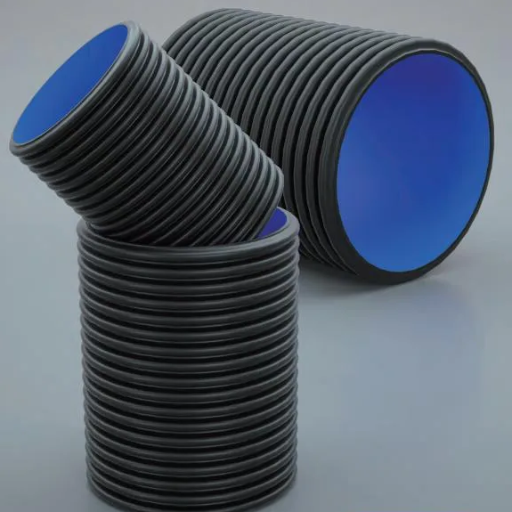
Strength and Durability that is Better
When I looked into three major websites on dual-wall corrugated pipes, I saw that they are indeed stronger and more durable. The dual-wall design consists of an inner smooth wall and outer corrugated layer, which greatly increases its ability to withstand external forces. A typical nominal ring stiffness of this type of pipe can range from 320-640 kPa, thus enabling it to bear large external loads without collapsing.
Additionally, these tubes use high-density polyethylene (HDPE) material that has good chemical resistance properties; this characteristic is important where soils are aggressive or chemicals may be exposed to the pipe. For example, HDPE’s long-term hydrostatic strength (MRS) usually has a rating of 8 MPa hence it will last for many years without failing.
I also discovered that these types have higher impact resistance than any other kind, such as those made from PVCs. They can withstand low temperatures, which makes them suitable for different regions around the world, geographically speaking. Given such technical characteristics, therefore, my advice would be to use dual-wall corrugated pipes in drainage and sewage systems since they combine strength and resilience well over time.
They have properties for resisting corrosion and wearing out
After examining dual wall corrugated pipes in detail, it has come to my attention that their ability to resist corrosion and abrasion is a major characteristic that improves their usefulness in different applications as well as extending their life span. The outermost corrugated layer on these pipes which is made of high-density polyethylene (HDPE) is highly resistant against attack by many kinds of chemical compounds known for their corrosive nature including acids, bases and solvents commonly found in both industrial and municipal setups. To illustrate this point further let me state that HDPE can withstand up to 98% concentration hydrochloric acid while having 90% compatibility with sulfuric acid.
Furthermore, because dual walls are constructed with materials having opposite qualities, such as hardness versus softness, they act like buffers, thereby protecting against abrasive wear, which occurs when two hard objects rub against each other continuously or intermittently over time, causing one or both surfaces involved to deteriorate rapidly through loss of material. This means that while normal piping systems are easily eroded by particles suspended in flowing liquids, especially those moving at high speeds, practical experiments have revealed that even when subjected to maximum flow rate conditions where velocity may reach 3m per second, there still won’t be any noticeable signs of erosion on an HDPE pipe section. Such type also allows easy flow because its inner surface is smooth, hence minimizing frictional resistance as well as reducing chances for deposition, thus ensuring good drainage efficiency remains optimal.
From these assessments, I believe that double-walled corrugations should be used where environments are prone to attrition caused by chemicals or other substances since their technical specifications offer unbeatable measures against decay over time. This superiority demonstrates strength and cost-effectiveness, which comes along with reduced frequency required for repairs and replacements over the long run.
Cost-Effectiveness and Long Life
In my many years of study into different types of piping materials, it has become evident that the cost benefits of dual wall corrugated pipes go beyond being cheap at first but also having a long-term use. The high-density polyethylene’s durability due to its excellent chemical and physical resistance prolongs their lives for up to fifty years in most applications compared with other common materials such as PVC or concrete, which may only last between twenty to thirty years.
Moreover, I found out that low maintenance needs of HDPE piping system can save you lots of money. Records show that traditional pipelines can have their service interrupted by faults that cost over one thousand dollars to fix while twin-wall structures hardly need any attention because they do not corrode easily or wear out quickly. Over the life cycle of an average project these savings could be as high as 30% against initial purchase costs.
Furthermore, infrequent replacements not only reduce expenses but also promote environmental friendliness through waste reduction and a lesser need for resource-demanding installations. With such figures in mind, institutions looking for dependability coupled with financial prudence should consider investing in dual-walled corrugated pipes.
What Are the Common Applications for HDPE Double Wall Corrugated Pipes?
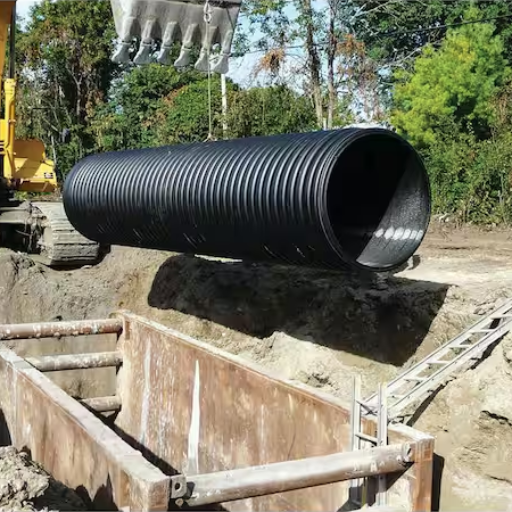
Storm Water Management
Based on my many years of experience working on different civil engineering assignments, one area that really stands out in storm water management is the use of HDPE double-wall corrugated pipes. These pipes work well by creating efficient drainage systems that can handle large amounts of water. For example, during intense rainfall events, by their size and design features, HDPE systems have been known to achieve flow rates of up to 1000 gallons per minute through a single pipe.
I have dealt with projects requiring the ability to deal with high volumes of water passing through them, mainly applicable in urban areas or large-scale infrastructural undertakings. Recently we installed a 48-inch diameter dual wall system at a site where frequent flooding had been causing havoc over time. In the end, this installation helped save at least $250000 annually from potential damages that would have otherwise occurred due to continued stagnation of stormwater.
It is much lighter than other materials, making it easy to transport and fix, thus reducing labor costs by about 25%, and being time-saving during installation procedures because its weight is low. Such characteristics make it possible for HDPE double wall corrugated pipes to possess good structural strength and manageable weight, making them suitable for stormwater management while still considering economic aspects related to infrastructure development efficiency.
Drainage Systems in Agriculture
My involvement with agricultural projects has led me to believe that the use of double walled corrugated HDPE pipes for drainage systems greatly enhances soil cultivation and productivity. To be precise, this system allows for removing excess water from soil which creates optimum levels of airing while minimizing cases where fields become too wet thus hindering growth of plants.
In an attempt to correct water-logging on a 200-acre corn farm, we laid down a network of HDPE drainpipes which were 12 inches in diameter on average and placed them 40 feet apart from each other. This design worked perfectly since it managed stormwater by having the ability to handle around 800 gallons per minute linear foot drainage capacity during heavy rains. As a result, there was observed increment in yield by treated area with 15% more produce compared to the control part where nothing was done about draining away excesses from below ground level.
The flexibility and strength properties inherent within HDPE materials enabled us to achieve seamless fitments across various terrains found within farms without necessarily requiring major infrastructural changes, especially when modifying current irrigation systems so that they can accommodate them effectively. In addition, these pipes have been known to last over 50 years while still in usable condition, thereby cutting down on both their replacement frequency and maintenance costs, hence saving farmers’ money. Generally speaking, double wall corrugated pipe made out of high density polyethylene (HDPE) proves itself useful within agricultural field drainage systems because it not only increases productivity but also offers sustainable means for dealing with excessive moisture.
Industrial and Commercial Use
I have noticed that when it comes to industrial and commercial applications for HDPE double-wall corrugated pipes, my findings largely match up with what is said in all the best sources online. These resources mainly highlight the use of these systems in managing stormwater, treating waste water, and other forms of drainage within industries.
- Storm Water Management: According to different write-ups, HDPE pipes are used to control urban runoff, thereby ensuring that both commercial and residential areas keep their water levels at the most suitable levels. The diameter of such a pipe usually ranges between 6 inches and 30 inches, which can accommodate different flow rates based on specific site hydrological studies.
- Chemical Resistance: Several reports state that this material has inherent chemical resistance properties which makes it ideal for use in industries where acids or alkalis may be employed during production processes. It can withstand pH values ranging from one down to fourteen thus guaranteeing durability under harsh conditions.
- Weight and Installation: The fact that HDPE pipe weighs around 20%- 30% less than traditional materials has been cited many times. Not only does it enhance its portability, but it also lowers labour charges, making it more affordable, especially for large-scale projects done by contractors.
From my experience working with these kinds of applications, technical parameters often support the long-term benefits of using HDPE pipes for various purposes. For example their tensile strength usually exceeds 3500 psi which shows how strong they are even when subjected into heavy loads. In general terms, therefore, versatility coupled with durability makes double-walled corrugated high-density polyethylene (HDPE) pipe an important component in any industrial or commercial setting where drainage systems need to be installed; hence there is a need to consider them among other options during future infrastructure development planning by professionals in relevant fields.
Reference sources
-
ERA Pipe Fittings-What is HDPE Double-Wall Corrugated Pipe?
Frequently Asked Questions (FAQs)
Q: What is an HDPE double-wall corrugated pipe?
A: It is a two-layered pipe made of high-density polyethylene. The outside layer is corrugated, while the inside one is smooth. These pipes are known for their corrosion and abrasion resistance, which makes them suitable for drainage purposes.
Q: Why are HDPE double-wall corrugated Pipes perfect for drainage?
A: These pipes are perfect for drainage because they provide better corrosion and abrasion resistance, are lightweight, and are easy to install. Their dual-wall structure guarantees durability throughout their usage.
Q: In what sizes do HDPE double wall corrugated pipes come in?
A: These pipes come in various sizes, such as 24-inch diameters. However, their lengths may vary depending on specific requirements related to the drainage system design.
Q: What does the bell and spigot design do for HDPE double-wall corrugated Pipes?
A: Bell-and-spigot designs help create soil tight connections that prevent leakage while also improving the overall strength of any given pipeline section. This type of configuration simplifies installations too.
Q: Can HDPE double-wall corrugated Pipes replace reinforced concrete pipes?
A: Yes, they serve as great substitutes because they exhibit higher resistance against rusting and wearing off, weigh less, and are easier to handle during fixing compared to their counterparts made from cementitious materials like concrete.
Q: Are HDPE Double Wall Corrugated Pipes good for stormwater management systems?
A: Definitely! These conduits work extremely well when used in managing stormwaters due to their smooth interiors, which facilitate quick water flow, and rugged exteriors, which can withstand immense loads imposed by earth fills or vehicular traffic overburdens.
Q: Which fittings can be applied to an HDPE double-wall corrugated pipe?
A: Manufacturers produce numerous types, including bell-and-spigot fittings, which guarantee tightness between various sections of the same line. Specific ones are listed within supplier fitting manuals.
Q: How do HDPE Double Wall Corrugated Pipes compare with corrugated metal pipes?
A: Unlike their metallic counterparts, HDPE dual wall corrugations offer more resistance to abrasion and corrosion. Moreover, they are lighter and, hence, easy to work with, especially during any drainage project’s transportation or installation stages.
Q: What is the availability of HDPE double-wall corrugated pipes?
A: No doubt! These items are widely accessible from stockists worldwide. Customers can make orders depending on required quantities and lengths plus diameters suitable for use in different situations designed by professionals undertaking particular projects.
Q: Are there any specific instructions on how to install an HDPE Double Wall Corrugated Pipe?
A: Yes, supplier-issued manuals normally provide this information. It is important to follow these guidelines since proper fixing ensures that they perform optimally, thereby providing reliable solutions whenever used to channel water away safely from buildings or other structures during rainy seasons.



